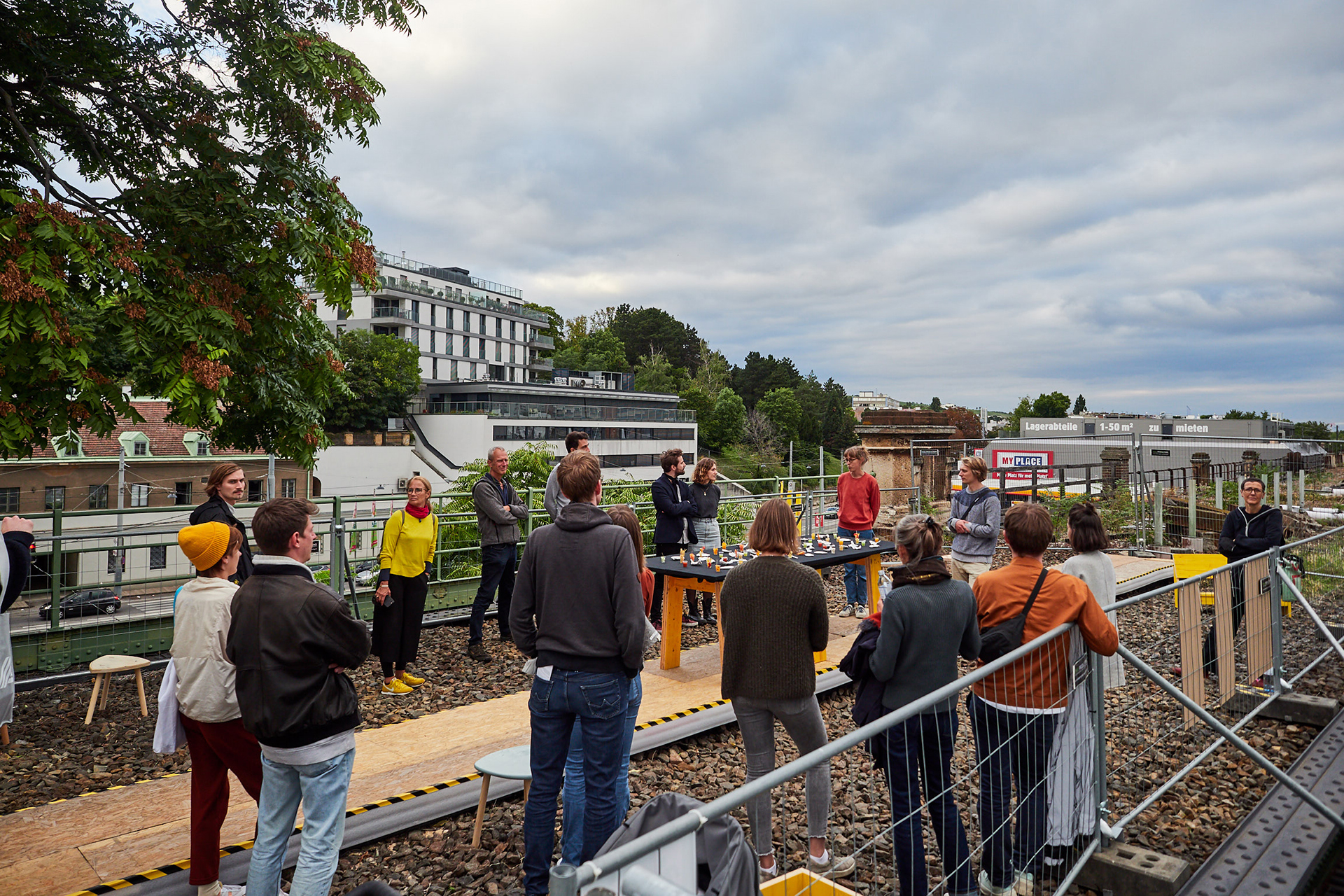Missing Link
New York’s High Line Park is a renowned urban project with worldwide fame. Vienna also has a railway viaduct that has been unused for many years.
The MISSING-LINK project aimed to reactivate this currently inactive and inaccessible area on the track bed of the disused light railway. As both a structural and artistic intervention, the potential of this site as a vertical public space was to be tested and analyzed. The objective was to temporarily expand the existing infrastructural connection between Vienna’s 19th and 20th districts.
A central element of the project was the missing link between the Franz-Ippisch-Steg and the track bed of the disused light rail of the former belt line, also referred to as the “missing link.” Only ten steps were needed to overcome the height difference between the footbridge and the light rail. The project proposed creating this connection for the duration of the festival and utilizing and revitalizing the wasteland on the light rail arches.
In extending the connecting axis of the Döblinger Steg and the Franz-Ippisch-Steg, a temporary stair tower made of prefabricated scaffolding parts was constructed. During Vienna Design Week, this installation allowed access to the urban wasteland, bringing the unused area to life. The temporary use of this space aimed to reveal hidden urban dynamics and initiate open spaces where they were previously impossible or uncommon.
Concepts such as subsoil, fallow land, city, buildings, and infrastructure were treated as equivalent options for development or use. This approach enabled the transformation of obsolete structures and the prevention of demolition. A temporary space for participation by both districts was created through cinema evenings with projections onto a nearby fire wall, as well as lectures, readings, concerts, and workshops.
Along with the festival audience, the professional jury of the Erste Bank MehrWERT Design Prize also celebrated and awarded MISSING-LINK their highest prize. “Creating a shift in perspective is one of the many potentials of design and architecture conceived in a social context,” praised the jury. The project successfully filled the potential with content, and the balance between targeted design intervention and concrete offerings was convincing. MISSING-LINK demonstrated that the path to a Viennese High Line Park wouldn’t be far: only a few steps were missing to overcome the height difference between the footbridge and the former belt line. For the duration of the festival, the wasteland on the light rail arches was made accessible and utilized by various actors. Open space was initiated exactly where it had not been possible before.
Artists
The project was initiated and carried out by Marlene Lübke-Ahrens and Wolfgang Novotny. Marlene Lübke-Ahrens studied architecture and stage design at the Academy of Fine Arts Vienna. Her artistic work spans between stage, costume, architecture, art, and photography. A common theme in her works is the interest in conceptualizing space, exploring it, and making it accessible to others. Wolfgang Novotny studied architecture, sculpture, and space & design strategies at the Academy of Fine Arts Vienna and the University of Art and Design Linz. Novotny’s work focuses on virtual and physical spaces and their interactions with the human body and perception. During VIENNA DESIGN WEEK, Lübke-Ahrens and Novotny investigated how hidden urban dynamics can be revealed through minimal interventions.
Missing Link
- Authors: Marlene Lübke-Ahrens / Wolfgang Novotny
- Location: Vienna, Austria
- Year: 2021
- Budget: 13.000€; funded by: Vienna Design Week,Vienna Business Agency, Arts Dept. of the City of Vienna (MA7)
- URL: https://www.viennadesignweek.at/archiv/2021/missing-link-ein-versatzstueck-der-stadtbahn/

